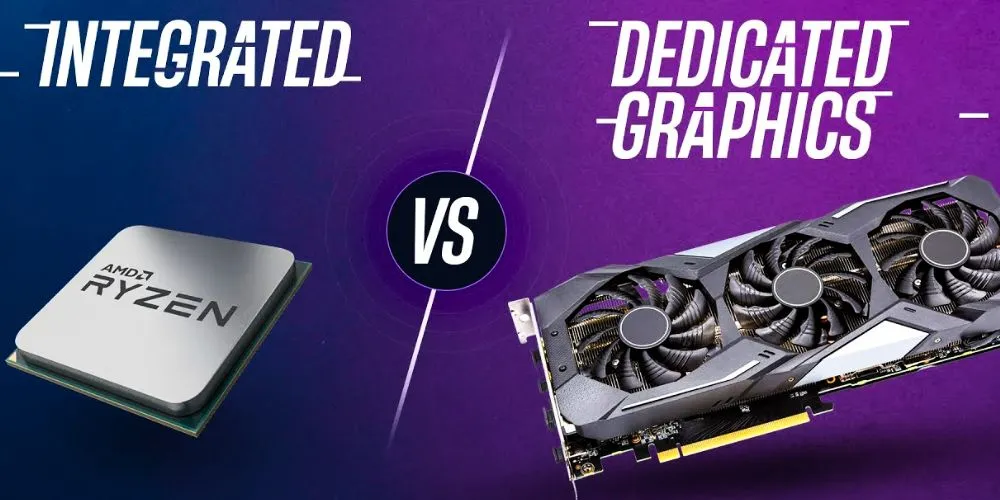The evolution of computer graphics technology has significantly transformed how users interact with digital environments, from gaming and content creation to everyday computing tasks. At the core of this transformation is the graphics processing unit (GPU), which comes in two primary forms: integrated and dedicated. As modern CPUs increasingly incorporate powerful integrated GPUs, the distinction between these two types of graphics solutions becomes more relevant than ever. This article explores how integrated GPUs compare to dedicated graphics cards, examining their architecture, performance, use cases, limitations, and future developments.
Understanding Integrated and Dedicated Graphics
To understand the comparison between integrated and dedicated GPUs, it’s essential first to grasp what differentiates them in terms of design and functionality.
Integrated GPUs are built directly into the CPU or on the same die as the CPU. This design allows for a compact system architecture where the CPU and GPU share system memory (RAM) and other resources. Integrated graphics are typically sufficient for standard computing tasks such as web browsing, video playback, and productivity applications.
Dedicated graphics cards, on the other hand, are standalone hardware components with their own GPU chip, memory (VRAM), power regulation, and cooling systems. They connect to the motherboard via an interface like PCIe and are designed to handle more graphically intensive workloads such as gaming, 3D rendering, and scientific simulations. Dedicated GPUs deliver higher performance by offloading graphics tasks entirely from the CPU and accessing specialized high-speed memory.
Architectural Differences Between Integrated and Dedicated GPUs
Integrated and dedicated GPUs differ not only in placement but also in the underlying hardware and resource management, which significantly impact their capabilities.
Shared vs. Dedicated Resources
Integrated GPUs utilize shared system resources, meaning they draw from the main RAM for graphics operations. This design limits the amount of memory available to both the CPU and GPU, resulting in lower bandwidth for graphics processing. Additionally, the thermal limits imposed by the CPU package restrict the amount of power and heat that the integrated GPU can handle.
Dedicated graphics cards feature their onboard memory (VRAM), typically with much higher bandwidth than system RAM. This allows them to handle larger textures, higher resolutions, and more complex graphical computations without impacting CPU resources. They also have dedicated cooling solutions and power delivery systems, enabling more aggressive performance tuning and sustained workloads.
Graphics Capabilities and Compute Performance
While integrated GPUs have significantly improved, especially with the advent of AMD’s RDNA and Intel’s Iris Xe architectures, they still fall short of dedicated GPUs in raw compute power. Devoted cards have larger numbers of cores, higher clock speeds, and more advanced parallel processing capabilities. These attributes make them more suitable for tasks like real-time ray tracing, high-resolution gaming, and GPU-accelerated machine learning.
Use Cases and Performance Expectations
Their design goals and resource constraints dictate the performance and applicability of integrated and dedicated GPUs.
Everyday Computing and Media Consumption
For most casual users, integrated GPUs provide ample performance. They are well-suited for web browsing, video streaming (even in 4K), office productivity, and light photo editing. Modern integrated GPUs can also support multiple displays, hardware acceleration for media codecs, and even some casual gaming at reduced settings.
Gaming and High-Performance Applications
Dedicated graphics cards are the clear choice for gaming enthusiasts and professionals. They offer superior frame rates, higher resolutions, and the ability to enable advanced visual effects such as ray tracing and anti-aliasing. Moreover, their larger memory capacity allows smoother gameplay at ultra settings and better performance in VR environments.
In professional settings, dedicated graphics processing units (GPUs) are essential for tasks such as video editing, 3D modeling, and scientific simulations. Applications such as Adobe Premiere Pro, Blender, and MATLAB benefit from GPU acceleration, where parallel processing capabilities drastically reduce render and compute times.
Power Consumption and Heat Management
Thermal and power considerations are crucial when selecting between integrated and dedicated GPUs, particularly in portable computing environments.
Integrated GPUs are more energy-efficient, which is why they are commonly found in laptops and ultrabooks. They produce less heat and consume less power, contributing to longer battery life and quieter operation. Their integration into the CPU also reduces the need for additional cooling infrastructure, enabling thinner and lighter device designs.
Dedicated graphics cards, while more powerful, demand significantly more power and generate more heat. High-performance GPUs can require hundreds of watts of power and necessitate active cooling solutions such as large heatsinks, fans, or even liquid cooling systems. As a result, systems with dedicated GPUs are typically larger, heavier, and louder.
Cost and Upgrade Considerations
Cost is another critical factor influencing the decision between integrated and dedicated graphics, particularly in budget-sensitive environments.
Integrated GPUs help lower the overall system cost by eliminating the need for a separate graphics card. They are ideal for users who do not require high-end graphics capabilities and want a compact, cost-effective solution for basic tasks.
Dedicated GPUs significantly increase the cost of a system, especially in high-end configurations. However, they offer a clear return on investment for users who demand better graphics performance or professional-grade capabilities. Additionally, dedicated graphics cards can be upgraded independently of the CPU and motherboard, allowing users to extend the life and versatility of their systems.
Limitations and Bottlenecks
Despite their benefits, both integrated and dedicated GPUs come with inherent limitations that must be considered in specific use cases.
Integrated GPUs are constrained by shared memory bandwidth and thermal limits, which can lead to bottlenecks during intensive graphics workloads. They also lack the advanced features found in high-end dedicated cards, such as support for large texture libraries, AI-driven upscaling, or real-time ray tracing.
Dedicated GPUs, while powerful, introduce complexity in system design. Their larger size, higher power draw, and heat generation require more robust power supplies, cooling solutions, and chassis space. Additionally, their performance can be limited by other system components, such as CPU bottlenecks or inadequate RAM.
Future Trends in GPU Integration
The landscape of GPU technology is rapidly evolving, with emerging trends that continue to blur the lines between integrated and dedicated graphics.
Manufacturers are pushing the limits of integrated GPU performance with each new generation of processors. AMD’s Ryzen APUs with RDNA graphics and Intel’s latest Core processors with Xe architecture show that integrated solutions are becoming increasingly capable for both mainstream and creative workloads.
Simultaneously, developments in chipset architecture and unified memory systems are enabling more efficient interaction between CPU and GPU components. Apple’s M-series chips exemplify this trend, where integrated GPUs benefit from high-bandwidth, low-latency memory shared across the entire system, offering performance that rivals entry-level dedicated GPUs.
Hybrid solutions, such as dynamic GPU switching and external GPU (eGPU) docks, offer flexibility by allowing systems to switch between integrated and dedicated GPUs based on workload, optimizing power and performance on demand.
Conclusion
Integrated and dedicated GPUs each serve distinct roles in the computing ecosystem, shaped by their architecture, performance capabilities, and intended use cases. Integrated GPUs provide energy-efficient and cost-effective solutions for everyday computing and media tasks, while dedicated graphics cards deliver the raw power needed for gaming, professional content creation, and high-performance computing. As integrated graphics continue to improve and hybrid solutions emerge, users will benefit from more choices and better performance across all device types. Understanding the strengths and limitations of each GPU type is essential for making informed decisions that align with individual computing needs and performance expectations.










